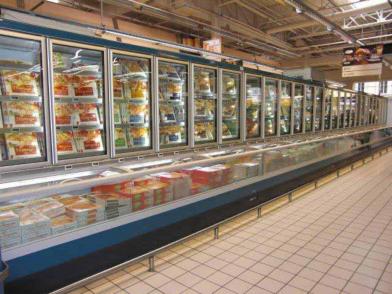

Three Big Steps in Refrigeration, Better for the Environment
Upgrading a supermarket's refrigeration equipment can save up to 30% of energy. This is an example of a refrigeration company's strategy to increase efficiency and reduce emissions on three fronts: design & manufacture, maintenance & data collection, and refrigerant usage. Manuel Lamúa, Manager of AEFYT, analyses all the progress being made.
The European Commission has recognised the refrigeration sector’s progress in energy efficiency and emissions reduction, an area in which refrigeration is doing its homework and getting top marks. But how? Manuel Lamúa is chairman of the Association of Cold Storage Companies and Technologies (AEFYT). He says that increasing energy efficiency and reducing emissions in refrigeration facilities calls for different approaches from related angles.
Firstly, “designing and building the installation, must take account of basic sustainability criteria, such as insulation, eco-design and the use of refrigerants with low Atmospheric Warming Potential.” Secondly, “good maintenance and data collection using the latest artificial intelligence technologies and focusing on aspects like detecting refrigerant gas leaks and temperature deviations enables us to act quickly to solve any problems.” And thirdly, coolants.
Lamúa emphasises that these aspects taken together now form part of the foundations of energy efficiency in the refrigeration sector. And he adds that “Likewise, scores like Energy Efficiency Coefficient (EEC), Energy Efficiency Ratio (EER) in the refrigeration cycle and System Efficiency Index (SEI), are increasingly relevant when evaluating the installation of a refrigeration system.”
Refrigerant Gases
Regarding the move towards refrigerant gases with low or zero Global Warming Potential (GWP), the refrigeration sector is meeting the F‑Gas Regulation’s objectives, at present, and the market already has available a wide range of refrigerants suitable for the different needs of refrigeration users: from natural refrigerants to low-GWP HFC mixtures to slightly flammable A2L refrigerants. “In this field, the industry has been working against the clock to adapt and provide solutions that have radically contributed to the environmental sustainability of refrigeration installations.”
It is important to note that soon not only the GWP of refrigerant gases will be assessed, but also the installation’s total equivalent warming impact (TEWI), its sustainability and life cycle. “The latter aspect can be extended to cover the complete refrigeration installation, and we have to consider its impact from the moment it begins operating until it is finally dismantled, applying reuse and recycling considerations.”
Sectors That Benefit
The AEFYT Chairman also stresses that energy efficiency progress in the refrigeration industry not only benefits affects refrigeration companies. It is also crucial for achieving the environmental goals of companies that use refrigeration, such as those working in the hotel and catering, food, or tourism.
For example, “We estimate that upgrading a supermarket’s refrigeration equipment can lead to energy savings of up to 30%. The refrigeration industry’s social and economic value affects more than 50% of Spain’s GDP through economic sectors such as the Horeca, food chain, telecommunications, healthcare. Thinking that to operate they need refrigeration and air conditioning we can understand all that this industry can do to contribute to decarbonisation in Spain.”





